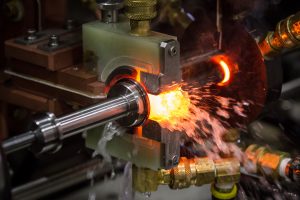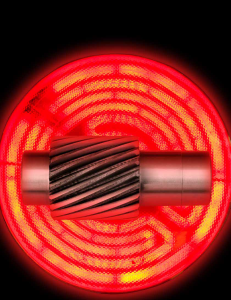Article | May 20th, 2020
Induction Heat Treatment Challenges in a Highly Digitized World

The technology of heat treating by means of electromagnetic induction is advancing at an accelerated rate, addressing new challenges and a rapidly changing business environment. The variety of parts gets larger while product cycle times get shorter. In many induction applications, heating time is less than a few seconds and is only a fraction of a second in some cases.
Factors traditionally used by commercial heat treaters to evaluate induction equipment include technical capability, performance consistency, delivery time, machine longevity, and price. With recent industrial trends, the decision to purchase heat treat equipment also requires consideration of additional factors including equipment flexibility, traceability of component heat treatment quality, digital connectivity, and the ability to store and access process data.
Piece-by-piece processing capability with individual component traceability, readiness for automation, and digitization of process control and monitoring have always been among the most attractive features of induction heat treatment relevant to the fourth industrial revolution (Industry 4.0). Continual advancements in microprocessor and microcontroller technology have resulted in previously unavailable sophisticated control/monitoring systems.
However, such sophistication can add considerable cost to equipment, discouraging some aspects of implementing Industry 4.0 operating strategy. For example, including all possible “bells and whistles” into equipment design to enhance monitoring/control capabilities and digital data collection might result in a price that greatly exceeds what the buyer is willing to pay. That is a reality.
To read the full article, click here or visit Inductoheat.com.


